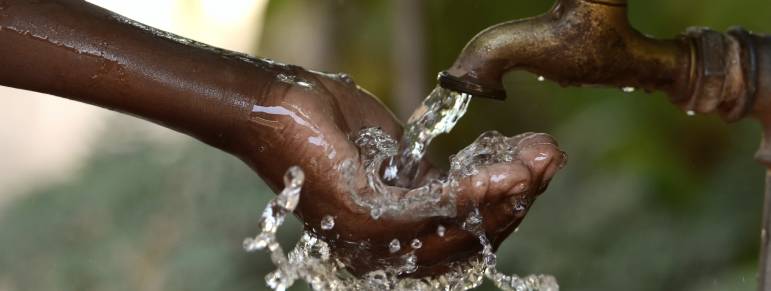For many people, obtaining drinking water is such an easy and daily process that they do not even give it importance: It is simply a question of opening the tap of running water or the bottle or jug that we have bought in the supermarket. However, this is not the reality in many places where drinking water is scarce, or even non-existent.
In fact, according to the WHO in the world there are more than 2 billion people living in countries with water scarcity , with data updated to March 2022. This situation will probably worsen in some regions as a result of climate change and the growth of the population.
Another disturbing fact: In the world there are at least 2 billion people who use a source of water for human consumption contaminated with feces, due to the widespread custom in some regions of the world of defecating in the open air , without using the appropriate structures for defecation. management of human waste, such as the toilet. Although the countries where this takes place have launched campaigns to raise public awareness while providing them with adequate infrastructure, in many places it is still an endemic problem.
Microbial contamination of water for human consumption as a result of contamination with faeces poses the greatest risk in terms of health and transmission of diseases such as diarrhoea, cholera, dysentery, typhoid fever and poliomyelitis, although not the only one. Safe and sufficient water, as indicated by the WHO, is also essential to prevent acute respiratory infections and numerous tropical diseases .
And not only that: Improving access to drinking water, sanitation and the management of water resources influences the economic growth of countries and regions, and contributes to the reduction of poverty .
Water treatment with sodium hypochlorite

Thus, clean water is essential, whether for direct human consumption, for hygiene or for food processing and other industrial purposes. This leads us to the second point: in addition to being healthy, water must be accessible, which today is a problem for remote populations that do not have a nearby and sufficient infrastructure to provide them.
One of the most efficient solutions is to make existing water resources drinkable, from rivers and lakes to groundwater, to give a few examples. In this sense, the treatment and disinfection of water for human consumption with sodium hypochlorite is one of the most efficient and safest methods for health, since other “homemade” methods such as boiling water do not eliminate contamination by faeces or waste. industrial. An illustrative fact is that the sodium hypochlorite market for this purpose has an expected growth of 5% per year in the period 2021-2030.
The process of disinfecting water with sodium hypochlorite is nothing new: This substance was discovered in the s. XVIII by Claude Louis Berthollet, although it was the pharmacist Antoine Germain Labarraque who discovered the disinfection capacity of sodium hypochlorite for medical and health applications. Currently, its most frequent applications are:
- Water purification
- Industrial wastewater treatment
- medicine and health
Sodium hypochlorite is a compound obtained by applying electrolysis to a saline solution (brine). The brine is introduced into an electrolysis card and an electric current is applied; this results in two products, chlorine and soda, which react immediately to form sodium hypochlorite. Thus, sodium hypochlorite is a compound containing oxidative chlorine (NaClO). If applied to water in the appropriate proportion, it reacts to generate hypochlorous acid (HOCl), which.
An advantage of this method is that it is relatively inexpensive, if sodium hypochlorite is available. In this sense, there is a large part of the world’s population that does not have access to local production, but rather imports it, with the resulting restrictions and risks.
One factor to be aware of is that concentrated sodium hypochlorite solutions have a natural tendency to decompose, generating chlorates. In the European Union, the presence of chlorates in food and water is regulated by Directive 2020/2184 , on the quality of water intended for human consumption. In other countries, either there are no applicable limits, or they may have different values.
In summary, to guarantee a regular and sufficient supply of water suitable for human consumption, and for other uses such as health, the food industry or the medical sector, it is also necessary to have a regular supply of sodium hypochlorite. In turn, and given the legal restrictions for the transfer and importation of hazardous materials that many countries have, the most efficient system is usually to have a local production of sodium hypochlorite that can supply the needs of both the population and the industry in the region.





